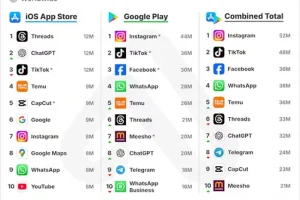Reading Time: 5 minutes
What if I told you that AI could take your podcast from concept to production with just a few clicks?
In today’s fast-paced digital world, podcasters and marketers alike are facing the daunting challenge of keeping up with the demands of content creation and distribution. The process of producing high-quality podcast episodes, managing guest outreach, editing, promoting, and finally distributing each episode can feel overwhelming. For many, it’s a struggle to maintain consistency and quality, leading to burnout and stagnation in audience growth.
Imagine spending hours on manual outreach, only to secure a handful of guests who might not fully resonate with your audience. Think about the painstaking process of editing raw audio and video files, managing your podcast’s distribution across multiple platforms, and then trying to find the time to promote your episodes effectively. All this while trying to engage your audience and stay ahead of the curve in a rapidly evolving industry. It’s no wonder that many podcasters find themselves falling behind, losing momentum, and missing out on opportunities to grow their brand.
But what if there was a way to streamline your podcast production and promotion, allowing you to focus more on creating engaging content and less on the time-consuming tasks that bog you down? By leveraging a tech stack powered by AI and automation, you can not only enhance the efficiency of your podcast production but also improve the quality and reach of your content. In this article, I’ll walk you through the tools and processes I use to produce my podcast, “AI in Marketing: Unpacked,” and how they can transform your podcasting efforts.
1. Finding and Securing Guests with Dux-Soup
Guest outreach is often one of the most time-consuming parts of podcasting. To streamline this, I use Dux-Soup, a Chrome extension that automates LinkedIn outreach. Here’s how it works:
• Personalized Outreach: I research potential guests through various channels, such as speakers at industry events, guests on other relevant podcasts, or direct referrals. Dux-Soup allows me to enroll their LinkedIn profiles into a specific sequence designed for my AI podcast. This sequence sends a customized invitation request, mentioning my interest in interviewing them.
• Automated Follow-Up: Once a guest accepts the invitation, Dux-Soup automatically follows up with a personalized message that provides details about the podcast, links to past episodes, and a link to schedule their appearance. This automation ensures that my outreach remains professional and efficient, without the need for constant manual follow-up.
2. Creating a Seamless Guest Experience with a Custom Landing Page
Once a guest is secured, it’s essential to provide them with all the information they need in one place. That’s where a custom landing page on my website comes in:
• Comprehensive Information: This landing page includes details about the podcast, links to past episodes, and an embedded Calendly calendar that shows available recording times. This not only makes it easy for guests to schedule their appearance but also helps set clear expectations.
• Onboarding Form: After scheduling, guests are directed to a Google Form that acts as my onboarding tool. Their responses are automatically fed into a Google Sheet, which serves as my ‘second brain’ for show planning. This level of organization ensures that I have all the necessary information at my fingertips when preparing for the interview.

3. Leveraging Magai for Episode Preparation and Promotion
Preparing for each episode is crucial, and AI can make this process significantly more efficient. I use Magai, an interface for ChatGPT and DALL-E 3, to streamline this process:
• Custom Personas for Episode Prep: I’ve created a custom Persona in Magai specifically for episode preparation. By inputting the guest’s name, LinkedIn profile, and preferred discussion topics, Magai helps me develop a structured run of show. This ensures that each episode is well-organized and tailored to the guest’s expertise.
• Promotion with AI: After the episode is published, I use a second custom Persona in Magai to prepare all of the promotional copy. This includes social media posts, email newsletter content, and more, all tailored to highlight the key takeaways from the episode.
4. Designing Consistent Branding with Canva
Visual branding is a key part of podcast promotion. To maintain consistency across platforms, I rely on Canva:
• Templates for Graphics: I’ve created a set of templates in Canva that I use for each week’s graphics. These templates ensure that all my visual content, from episode thumbnails to social media posts, is on-brand and instantly recognizable.
• Vertical Videos: Canva is also my go-to tool for building the initial vertical videos for TikTok, Reels, and Shorts. I use these videos to capture the audience’s attention and drive engagement across multiple social media platforms.

5. Editing and Enhancing Content with Descript
The editing process is where the magic happens, and Descript is my tool of choice for this stage:
• AI-Powered Editing: Descript generates a complete transcript of the episode, which I use to edit the podcast. Its AI Underlord tool removes filler words, applies studio sound, and offers other enhancements to improve audio quality.
• Segment Editing: I often clip out a segment within Descript, edit it, and re-insert it at the top of the show as a teaser. This not only makes the episode more engaging but also provides a quick hook for listeners.
• Final Production: Once editing is complete, I export the transcript for my blog post and the final recording file for the podcast. Descript also helps me apply burned-in captions to the vertical videos I’ve created in Canva, ensuring that all content is accessible and engaging.

6. Recording with Streamyard for Flexibility
For recording interviews, I use Streamyard:
• Separate Feeds for Flexibility: Streamyard provides a complete video as well as separate audio and video feeds, giving me the flexibility to edit and repurpose content in different ways. This is particularly useful for creating promotional clips and ensuring that the final product is polished and professional.

7. Distributing the Podcast with Megaphone and WordPress
Distribution is key to getting your podcast heard, and I use a combination of Megaphone and WordPress for this:
• Automatic Distribution with Megaphone: My podcast is hosted on the Marketing Podcast Network, which is built on Megaphone. New episodes are automatically distributed to all major platforms, including Apple, Spotify, Amazon, and YouTube. This ensures that my content reaches the widest possible audience.
• Publishing on WordPress: I publish recaps and transcripts as blog posts on my website, with the podcast embedded. This not only boosts SEO but also provides an additional way for my audience to engage with the content.
Recently I’ve started testing embedding the Spotify video player as well.
LISTEN TO AI IN MARKETING: UNPACKED:
WATCH AI IN MARKETING: UNPACKED:
8. Amplifying Reach with Agorapulse and Tailwind
Finally, promotion doesn’t stop at publishing. I use Agorapulse and Tailwind to amplify my content’s reach:
• Agorapulse for Social Media: Agorapulse allows me to distribute my vertical videos and other promotional content across multiple social networks simultaneously, including TikTok and YouTube Shorts. This multi-channel approach maximizes the visibility of each episode.
• Tailwind for Pinterest: To drive long-term traffic, I use Tailwind to push the blog posts with embedded podcasts to multiple Pinterest communities and shared boards. This helps keep the content circulating and attracts new listeners over time.
Conclusion: The Power of an AI Podcast Production Process
In the world of podcasting, efficiency and consistency are key to success. By leveraging a tech stack powered by AI and automation, you can streamline your podcast production and promotion processes, allowing you to focus on what truly matters: creating high-quality content that resonates with your audience. From finding and securing top-notch guests to editing and distributing your episodes, the right tools can transform your podcasting workflow, reduce stress, and ultimately drive growth.
If you’re feeling overwhelmed by the demands of podcasting, consider adopting some of these tools and techniques. Not only will they save you time, but they’ll also help you produce a podcast that stands out in a crowded market.
For a more in-depth look at how AI is transforming marketing, and how you can ramp up your knowledge, read our AI in Marketing Primer.

Related
Discover more from The Social Media Hat
Subscribe to get the latest posts sent to your email.










